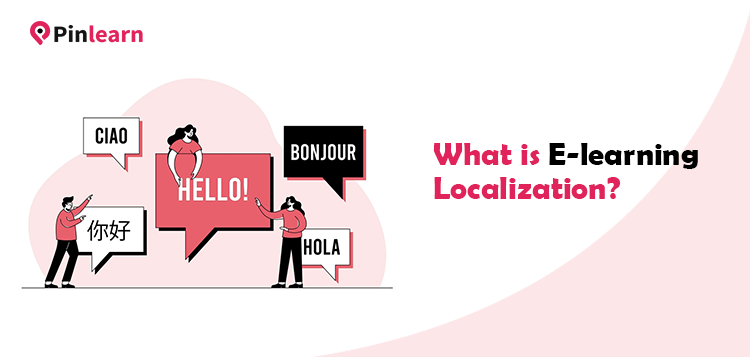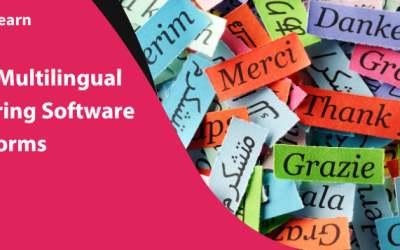E-learning Localization: What It Is and Why It Matters in 2025
Planning to scale your e-learning platform globally? Well, that’s a great milestone for your business. But that means a lot of work as well. Your content must connect with your local audience.
That’s where e-learning localization helps! From translating your course materials to localizing videos, you need to resonate with your audience. Localization moves beyond word-by-word translation to more culturally-appropriate content.
In this post, we explain localization, benefits, and steps to localize your e-learning content. So, whether you’re training a global workforce or scaling a strategic region, we have got you covered!
What is E-learning Localization? Why does it Matter?
E-learning localization involves adapting your content to a specific region or audience. Unlike language translation, localization extends to offer a more culturally appropriate experience.
Thus, localization optimizes images, symbols, currencies, and even UI interfaces to create a global learning experience. The result? Better learning outcomes, engaged learners and accessible learning.
Why does it matter?
The globalization wave has ushered in a wave of growth opportunities for businesses. Reimagine scaling new markets and supply chains and embracing new demographics. However, with growth comes challenges! You still need to provide an unhinged learning experience!
E-learning localization helps you to cater to specific learner’s needs across the globe. Learners can learn quickly in their native language. A one-size-fits-all approach no longer works! Whether you’re rolling out compliance training or a global e-learning platform, there are negative side effects.
For corporate training, rolling the same training content could mean:
- Disengagement and turnover
- Compliance and safety risk
- Reduced ROI
- Relevance to own workplace culture
- Low performance
- Chances of increased inaccuracies and errors
What are the Benefits of E-learning Content Localization?
Here’s how individual learners benefit from e-learning localization:
-
Increased Engagement
Curating content in a different first language could create a knock-out effect. In particular, employees and teams feel less equipped for challenges. They could feel less productive or disengaged from their goals. Localizing your content motivates and engages them better.
-
Promote Cultural Inclusion and Diversity
When content is well-adapted to the cultural nuances, it resonates better with the learner. Eliminating the negative stereotypes and adding cultural scenarios fosters an inclusive learning environment.
-
Expand Market Reach
With localized content, you can scale your content to diverse audiences.This way, you further boost your overall platform revenue.
-
Better Retention and Understanding
Obviously, learners can easily grasp and apply concepts that are well-adapted to their culture.
-
Better Business Outcomes
With localized training material, organizations can attract and retain top talent. When the content is available in the first language, they are more likely to complete it. Quoting workplace scenarios helps in better resonating with them.
Step-by-Step Guide on the E-Learning Localization Process
Adapting your education content through the cultural and linguistic lens needs effort. From mastering linguistic nuances to inherent tone, you need to research deeper.
On that note, let’s walk you through the 9-step e-learning content localization process:
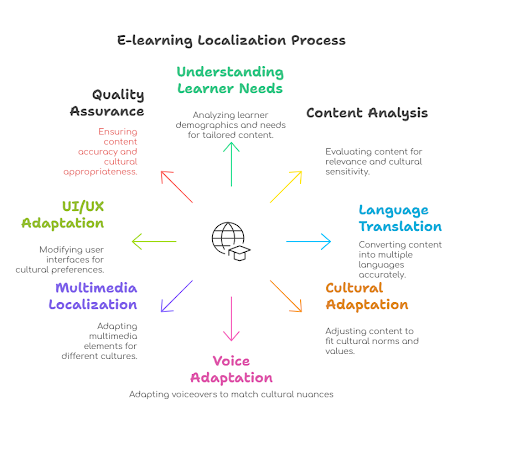
Step 1: Understand Your Learners and their Needs
Before moving to the actual localization process, know your audience well. This way, you can localize the right learning segments!
Here’s how to create a targeted learner persona:
- Target language
- Cultural aspects (customs, tradition, and religion for cultural sensitivity and relevance)
- Language style & preferences
- Academic background
- Social and Economic Factors
- Preferred assessment options
- Goals, interests, and motivations
This applies to the corporate scenario as well! For example, if you are creating corporate training content. Collect enough data and insights on employees. Segment employees into diverse groups by assessing learning needs and cultural preferences.
Step 2: Analyze Content
Identify what needs to be localized and what is better when generic.
For analyzing, consider evaluating these aspects:
- Text
- Images
- Colors
- Fonts
- Tone
- Idioms & phrases
- Measurement units
- Numeric formats
- Date/Time
- Audio and Video
You might also have to adapt to the local concepts and legal and technical standards. Moreover, each language’s localization needs might differ. That’s where your preliminary research comes into use!
However, while you localize, ensure the original content is not lost! Ensure the core message is delivered unaltered! Identify your localization needs early to avoid confusion later!
Step 3: Language Translation
If the learning material is not in the learner’s first language, translate it right away! This makes your content more understandable and relatable.
Well-versed with the target language? Go ahead and translate yourself! If not, seek professional help. Outsource it to vendors and translation agencies.
Translation is easier for flexible content. Avoid culturally specific scenarios or idioms that are difficult to translate.
Essential elements to consider for translation:
- Idioms or cultural expressions
- Cultural specific examples
- Industry-specific jargon and technical terms
- Content Tone
- Regional dialects
- Gender Neutrality
The goal is to convey the basic message in the best interest of the audience. Each language and culture adopts a unique communication style and tone. A joke that sounds outright humorous might fall through when translated.
Even the meaning of colors and visual expressions change in diverse cultures. For example, green is associated with growth in Western countries, while in China and Indonesia, it is associated with infidelity.
Ensure all the assessments, instructions, and text components are in the native language. This ensures the content is easily accessible to learners from diverse backgrounds.
Step 4: Adjusting the Cultural Context
Localization extends beyond content translation! For example, you have an employment onboarding program in English. But, now you have to localize it for your Spanish employees.
You’re done with literal English-to-Spanish translation. But, you find more scenarios and examples specific to the US audience. If you need to localize it aptly, this needs more work!
You need to fine-tune it with more regional case studies and workplace simulations. Changing names and dress codes could be some common adaptations.
Above all, you need to avoid any culturally insensitive or irrelevant content that causes offence.
For example, the cool “OK” sign is a universal sign of approval in the US. In contrast, in Brazil, France and Germany, it’s quite offensive. Something like, “You’re a loser.” There’s a similar interpretation for the thumbs-up approach! So, it’s better to avoid such situations.
Step 5: Voice Adaption & Subtitling
Voiceovers and subtitles are a crucial part of the localization experience. This involves dubbing videos and modifying the tone, speech and style.
Choose between voiceovers and subtitles. Subtitles seem to be the go-to approach, given its cost-effective approach. Contrarily, voiceovers work best for paying complete attention to the viewer. Subtitles are useful if the audience understands the target language to some extent.
For high-quality voiceovers, hire native speakers to record voiceovers. You must also consider the speed, local accents, and accuracy of the target audience.
Try making your video universally accessible for all. A visual representation could make it accessible to even the deaf and visual learners.
Text expansion, synchronization, and pronunciation are a few focus areas.
Step 6: Multimedia and Video Localization
Videos and multimedia are essential aspects of e-learning. Localization of videos means adapting the video to the cultural nuances. Now, this involves translating the video for the local audience, adding subtitles and also the interactive elements.
Given that, here are a few best practices for video localization:
- Transcribe your script into the source language
- Create a glossary of terms and a style guide for your video
- Translate on-screen text and UI elements like forms, buttons, quizzes, etc.
- Localize multimedia and interactive elements like quizzes, assessments, and drag-and-drop activities.
- Create culturally-neutral images without symbols or images
- For subtitles, leave 20% space at the bottom of the screen
Based on the video’s source language, there should be synchronization between subtitles and audio narration.
Step 7: UI/UX Adaption
Now, let’s talk about user-interace localization. Think about imagery, reading direction, and cultural specifications.
For example, Hebrew and Arabic are read from right to left direction(RTL). So, design the GUI accordingly while featuring the content.
Follow these key aspects of UX localization:
- Language Adaptation – Native speakers can find actual substitutes rather than a plain word-to-word translation approach.
- Navigation Standards – Rethink layouts and frameworks as per your audience preferences. Also, choose from broad pages and deeper structures based on what’s widely accepted. Thus, you make your site user-friendly and engaging.
- Cultural References – Consider the significance of different colors in diverse cultures. Avoid colors or cultural examples that are offensive.
- Text Expansion Consideration – Most languages have long sentences as compared to English. So, ensure you leave space for text expansion in the responsive layout.
- UI Interface Labels– Ensure all the UI interface labels are fully localized.
Step 8: Legal and Regulatory Compliance
Adhering to legal compliance for e-learning content helps in better data privacy and accessibility. Understand the generic and education industry-specific laws. You can also seek advice from legal experts on the local laws and regulations.
Key Legal Laws for E-learning:
- Section 509 Compliance (Accessibility)
Ensure your content is accessible to even people with disabilities. Follow the four principles of web accessibility (perceivable, operable, understandable, robust).
- Data Privacy Laws (GDPR, CCPA)
This ensures you have a clear and transparent policy on how user data is collected and used. GDPR (for the EU) and FERPA (for the US) are the two prominent privacy laws for e-learning. These laws prioritize operational transparency and user consent. Ensure your business has a fair privacy and refund policy.
- Copyright
Your e-learning content should be original. Ensure you have its ownership rights and it doesn’t infringe on copyrights.
Lastly, monitor the latest developments on the regional and local laws. And update your e-learning platform and content to avoid legal hassles.
Step 9: Conduct Quality Assurance and Testing
The last step is to ensure your content clears all the quality and performance tests. Collect user insights on your final e-learning modules.
Localized quality testing must include the following aspects:
- Linguistic accuracy
- Cultural relevance
- Legal compliance with regional and local laws
- Functional compatibility for measurements and date/time systems
- Usability and workflow(text-overflow or multimedia issues).
Surveys and user interviews are practical ways to gather user insights. Parallely, conduct objective testing using tools & software. Check the performance, usability and functionality. Verify the user’s opinions with objective testing. Thus, your content fits technical accuracy and meaningfulness.
Tools and Software for E-learning Content Localization
Well, nothing could replace the unparalleled expertise and humanization of linguists. But, tools and technologies can speed up the translation process.
Combine your acumen with the accuracy of tools to streamline localization. These tools could help in areas of translation, quality control and multimedia adaption.
Some recommended localization tools and software include:
-
Content-AuthoringTools
Content authoring helps to create, manage and collaborate on content creation. It helps to translate and culturally adapt content to a global audience. Rapid and simultaneous translations, localized interfaces, and caption translations are a few built-in options.
For example, Articulate Replay, Adobe Captivate, Camtasia
-
Computer-Assisted Translation Tools
These tools assist human translators with translation memory, and glossaries speed up the translation process. Translators can edit, manage, and modify translations between multiple languages.
For example, Phrase, MemoQ, WordFast.
-
LMS with Multi-lingual Support
LMS platforms support the translation of course content, multimedia, and user interfaces into multiple languages. Moodle allows you to create customized language packs for specific target regions.
For example, Moodle, TalentLMS, and Docebo.
-
Multimedia Localization Software
This specifically deals with the localization of audio & video elements. It supports voiceover editing, screen adaptation, and subtitling tools for localizing e-learning videos.
For example, Camtasia, Adobe Captivate, and Adobe Storyline.
-
Translation Management Systems (TMS)
These systems offer a centralized repository for storing translations and speed up manual tasks.
For example, Phrase, Memsource, Smartling.
-
Localized Testing Tools
These tools test how well your e-learning product is localized to a specific language. It validates the visual, functional, and linguistic aspects. This helps to perform quality checks to find translation errors and inconsistencies.
For example, XBench, Globalyzer, and Pseudoloc.
Successful E-learning Localization Examples
1. Duolingo
Duolingo, the popular language learning app, has over 500 million users globally. Apart from the app’s charming mascot and viral marketing stints, its localization efforts are a huge part of its success.
Localization Efforts:
Beyond word-by-word translation, Duolingo adapts humour, tones, jokes, UX and even visuals to over 40 languages and cultures.
For example, in a Dutch course, there’s a joke like “ik ben een appel” (I am an apple). They also curate lessons tailored to cultural nuances (e.g., local names and food references).
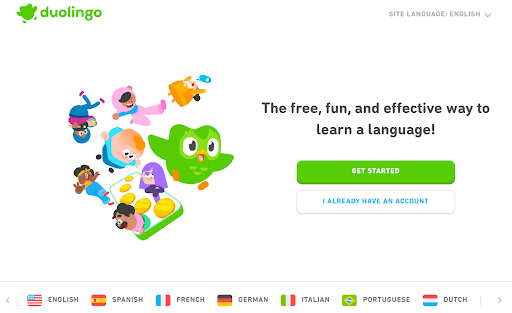
2. Khan Academy
Khan Academy is a leading online learning platform offering free education to all age groups. The non-profit works with an aim to make world-class education accessible to all. From K-12 subjects to test preparation, it engages with a wide variety of resources.
Localization Efforts:
- Platform experts have localized 20,000+ videos into 36 language
- Localized quizzes, lesson notes, and video lessons in their native language.
- The Khan Academy for Educators training program has been localized into the Ukrainian language.

3. Salesforce Trailhead
The world’s leading CRM company leaves no stone unturned in its localization efforts! Salesforce Trailhead practices localization for both its core CRM platform and B2C Commerce storefront. From software to documentation and training materials, it localizes for its clients worldwide.
Localization Efforts:
Language Packs for Business Managers
- Localizes documentation, release notes & highlights
- Training Materials and Tools
- Internationalization and localization for B2C storefronts
- Localization in the GEM platform
It localizes to popular languages like Spanish, Japanese, German, and French.
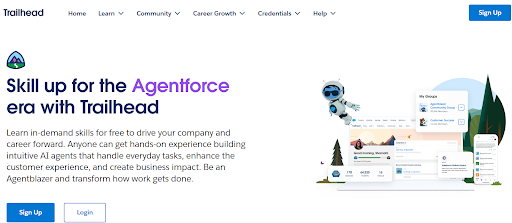
Wrapping Up
E-learning localization is crucial to expand your e-learning content globally. But localization is not just limited to a mere word-to-word translation. Your content must resonate with the linguistic and cultural scenarios of the local audience.
First, research about your target audience and market. Don’t limit your localization efforts to content or visual aspects. Think about the larger picture, like platform experience and legal procedures.
Combine human expertise with the accuracy of tools in your localized strategy. So, ready to localize your e-learning content today?
FAQ-Related to E-Learning Localization
1. What is localization in e-learning?
Localization means tailoring the content to the linguistic and cultural needs of your audience. It extends beyond mere translation of content. You need to ensure it’s apt to the cultural and regional landscape. The idioms, images, and symbols shouldn’t be culturally insensitive and irrelevant.
2. Which target audience benefits most from e-learning localization?
Corporate employees, international students, resellers, and frontline staff benefit from localization.
3. Is standardization and localization the same?
Standardization and localization are two contrasting approaches. Standardization focuses on a common standard and curricula for all learners. Localization emphasizes curating culturally relevant content, methods, and materials. This way, you can cater to the regional and linguistic needs of learners.
4. What are the different localization tools in e-learning?
Following are the localization tools & software:
- Content authoring tools – Articulate Storyline, Adobe Captivate, iSpring Suite
- Translation Management Systems – Smartling, Memsource, Phrase
LMS Software – Moodle, TalentLMS, Docebo

